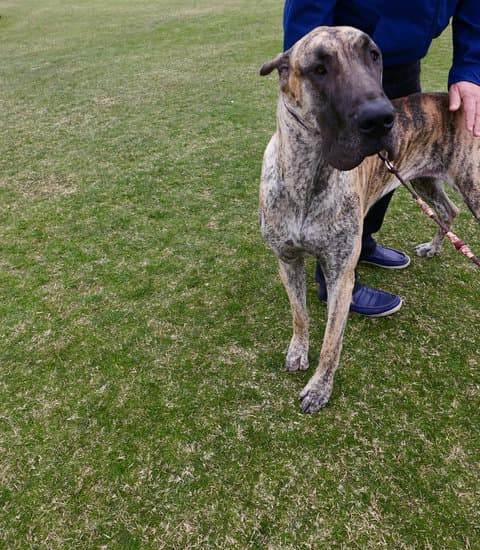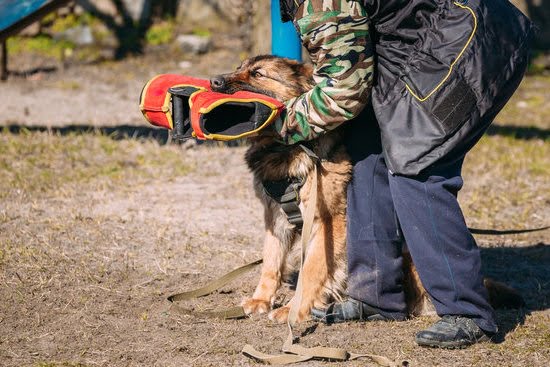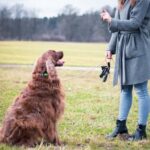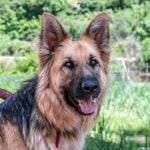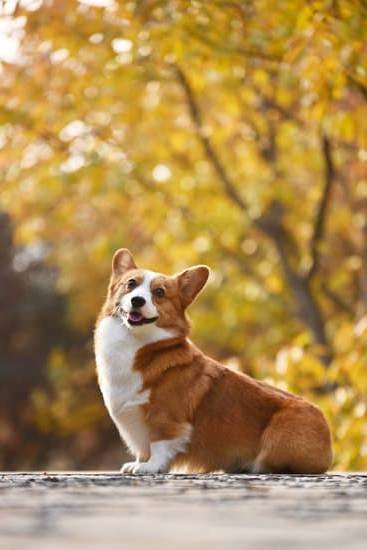Are you wondering how to train a dog not to be reactive? Understanding reactivity in dogs can be the first step in addressing this behavior. Reactivity in dogs is often triggered by fear, anxiety, or frustration, and it can manifest as barking, lunging, or growling. In this article, we will explore the causes and triggers of reactivity in dogs and provide effective training techniques to help your furry friend become more calm and non-reactive.
Signs of reactivity in dogs can vary from excessive barking or whining when encountering certain stimuli to pulling on the leash or showing aggressive behavior. It’s essential for pet owners to recognize these behavioral cues in their dogs so they can address them effectively. By understanding what prompts reactive responses in your dog, you can begin implementing positive reinforcement training and other techniques to encourage more desirable behavior.
Positive reinforcement training, which involves using rewards to encourage non-reactive behavior, is a powerful tool for shaping your dog’s responses. From treats to praise and affection, utilizing positive reinforcement can motivate your dog to exhibit calm and controlled behavior even in the face of triggers.
In addition to positive reinforcement, counterconditioning and desensitization techniques are also valuable tools for changing your dog’s emotional response to specific stimuli. These approaches involve gradually exposing your dog to triggers while pairing them with positive experiences, ultimately reducing their reactive responses.
Signs of Reactivity
Understanding the Signs of Reactivity
Reactivity in dogs can manifest itself in various ways, and it’s important for dog owners to be able to recognize the behavioral cues that indicate reactivity in their pets. Some common signs of reactivity include barking, lunging on the leash, growling, snarling, and even attempting to flee from or hide behind their owner when faced with a trigger. It is essential to pay attention to these cues as they can help you address your dog’s reactive behavior effectively.
Body Language Cues
In addition to vocalizations, a reactive dog may also exhibit certain body language cues that signal distress or discomfort. These can include raised hackles, a tense body posture, dilated pupils, ears pinned back against the head, and an overall “stiff” appearance. By paying close attention to these physical cues, you can gain insight into how your dog is feeling and better understand what triggers their reactive responses.
Triggers
Identifying the specific triggers that cause reactive behavior in your dog is also crucial. Triggers can vary widely from one dog to another but may include other dogs, strangers, loud noises, unfamiliar environments, or certain objects. By pinpointing what sets off your dog’s reactivity, you can take proactive steps to manage their exposure to these triggers and work towards desensitization and counterconditioning.
Positive Reinforcement Training
Rewards and Encouragement
Using rewards such as treats, praise, or playtime can help motivate your dog to exhibit non-reactive behaviors. By associating these rewards with calm and non-reactive responses in the presence of triggers, your dog will start to understand what is expected of them. Consistency is key when using positive reinforcement, so be sure to reward your dog every time they demonstrate the desired behavior.
Training Techniques
When implementing positive reinforcement training, it’s important to use specific techniques that target reactivity. For example, if your dog becomes reactive when meeting other dogs on walks, you can use treats and praise to reward them for staying calm and focused on you during these encounters. Over time, your dog will learn that staying non-reactive in the presence of other dogs results in positive outcomes.
Persistence and Patience
It’s crucial to approach positive reinforcement training with patience and persistence. Changing a dog’s behavior takes time, especially when addressing reactivity. Celebrate small victories along the way and remain consistent in your training efforts. With dedication and the right approach, positive reinforcement can help encourage non-reactive behavior in even the most reactive dogs.
Counterconditioning and Desensitization Techniques
To begin counterconditioning, it’s crucial to identify the triggers that cause reactivity in your dog. Once you’ve pinpointed these triggers, you can start pairing them with something positive, such as treats or toys. For example, if your dog becomes reactive when seeing another dog on a leash, you can start by giving them treats whenever they spot another dog from a distance. Over time, this will help your dog form positive associations with the trigger.
Desensitization involves slowly introducing your dog to the triggers that cause reactivity. This should be done in a controlled manner, ensuring that your dog doesn’t become overwhelmed. Gradually increasing exposure to the trigger while using positive reinforcement can help change your dog’s emotional response over time.
It’s important to note that counterconditioning and desensitization require patience and consistency. It’s essential to proceed at a pace that is comfortable for your dog and to celebrate small victories along the way. With dedication and the right approach, these techniques can help change your dog’s emotional response and reduce their reactivity.
The Importance of Consistency and Patience in Training
Training a reactive dog to be less sensitive requires consistency and patience. It is important for dog owners to understand that this process takes time and cannot be rushed. Here are some key points to consider when working on training your dog not to be reactive:
- Consistent Training Methods: Stick to the same positive reinforcement techniques and desensitization strategies when working with your dog. Inconsistency can confuse your pet and lead to setbacks in training.
- Patient Approach: Recognize that changing your dog’s emotional response to triggers will take time. Avoid getting frustrated or impatient, as this can negatively impact the training process.
- Regular Practice: Consistently work on training exercises with your dog, gradually increasing the level of difficulty over time. Repetition and practice are essential for helping your pet overcome reactivity.
Remember that every dog responds differently to training, so it’s important to tailor your approach based on your pet’s individual needs and personality. By maintaining consistency and practicing patience, you can help your reactive dog become more relaxed and confident in various situations.
Management Strategies
One of the key components in training a reactive dog is to understand and implement management strategies to avoid triggers and set your dog up for success. This involves being proactive in identifying potential triggers and taking steps to minimize or eliminate exposure to them. By doing so, you can create a safe and controlled environment for your dog while working on their reactivity through training.
It’s important to start by identifying the specific triggers that cause reactive behavior in your dog. This could be anything from other dogs, strangers, loud noises, or certain environments.
Once you have identified these triggers, you can take steps to manage your dog’s exposure to them. For example, if your dog is reactive towards other dogs, you can choose walking routes or times of day when there are fewer dogs around, or utilize tools such as a head collar or muzzle for added control during walks.
In addition to avoiding triggers, setting your dog up for success also involves creating a supportive environment at home. This means providing mental stimulation and physical exercise through activities like puzzle toys, interactive games, and regular walks or playtime. A well-exercised and mentally stimulated dog is less likely to react negatively to triggers, so incorporating these activities into your daily routine can help in managing reactivity while training.
| Management Strategies | Avoiding Triggers and Setting Your Dog Up for Success |
|---|---|
| Identification of Triggers | Proactive measures |
| Tools for control (e.g. head collar or muzzle) | Mental stimulation and physical exercise |
Seeking Professional Help
Sometimes, despite our best efforts, we may find that our dog’s reactivity is too challenging to address on our own. In such cases, seeking professional help from a certified dog trainer or animal behaviorist can be highly beneficial. These professionals have the knowledge and experience to create an individualized training plan tailored to your dog’s specific needs.
A qualified dog trainer or behaviorist will assess your dog’s reactivity and identify the underlying causes of the behavior. They can then provide you with the necessary guidance and support to address these issues effectively. Additionally, they can teach you how to recognize your dog’s triggers, manage their environment, and implement training techniques in a safe and controlled manner.
When looking for a professional to work with, it is essential to choose someone who uses force-free, positive reinforcement-based training methods. Avoid trainers who rely on punitive measures or aversive tools, as these approaches can exacerbate reactive behavior and harm the bond between you and your dog. Instead, opt for professionals who prioritize your dog’s emotional well-being and employ science-backed, ethical training techniques.
| Professional Help | Benefits |
|---|---|
| Individualized Training Plan | Addresses specific needs of your dog |
| Expert Guidance | Provides necessary support and advice |
| Positive Reinforcement Methods | Prioritizes emotional well-being of your pet |
Real-Life Scenarios
When it comes to training a reactive dog, real-life scenarios play a crucial role in reinforcing positive behaviors and overcoming triggers. By implementing training techniques in everyday situations, you can help your dog learn how to remain calm and non-reactive in various environments.
Here are some practical ways to apply training techniques in real-life scenarios:
1. Walks in the Neighborhood: Take your dog for walks around the neighborhood, gradually exposing them to different sights, sounds, and smells. Use positive reinforcement by rewarding calm behavior when encountering other dogs or people.
2. Socialization Opportunities: Arrange controlled socialization opportunities with other well-behaved dogs to help your dog become more comfortable and confident around unfamiliar canines.
3. Visits to Dog-Friendly Places: Bring your dog to dog-friendly parks or cafes, where they can practice being around other dogs in a relaxed setting. Use treats and praise to reward good behavior.
By incorporating these training techniques into real-life scenarios, you can help your dog build confidence, reduce reactivity, and ultimately improve their overall behavior in various environments. Remember that consistency and patience are key, so continue practicing these techniques regularly for long-term success.
Celebrating Progress
In conclusion, training a reactive dog requires dedication, patience, and consistency. By utilizing positive reinforcement and counterconditioning techniques, owners can help their dogs overcome their reactive behavior. It’s important to understand that progress may be slow, but celebrating even small improvements is essential for both the dog and the owner.
Recognizing and acknowledging your dog’s improvements is crucial in the training process. Whether it’s a reduction in barking or a calmer response to triggers, these are all steps in the right direction. By acknowledging and celebrating these milestones, owners can reinforce the positive changes in their dog’s behavior.
It’s also important for owners to continue seeking professional help if needed. Working with a dog trainer or behaviorist can provide valuable guidance and support throughout the training process. With dedication and persistence, most reactive dogs can learn to remain calm in various situations, leading to a happier and more fulfilling life for both the dog and its owner.
Frequently Asked Questions
How Do I Stop My Dog From Being So Reactive?
The first step to stop a dog from being reactive is to identify the triggers that cause the reactive behavior and then work on desensitizing the dog to those triggers. This can involve training techniques, positive reinforcement, and providing a safe and calm environment for the dog. Consistency and patience are key in addressing reactive behavior in dogs.
Can a Dog Reactive Dog Be Cured?
While it may not be possible to completely “cure” a dog of reactivity, it is definitely possible to manage and improve their behavior through training, behavior modification, and consistent positive reinforcement. With dedication and the right approach, many reactive dogs can learn to better control their reactions and feel more comfortable in various situations.
How Long Does It Take to Train a Dog to Not Be Reactive?
The time it takes to train a dog to not be reactive varies depending on the individual dog, their specific triggers, the consistency of training, and the methods used. It may take weeks or even months of consistent training to see improvements in a reactive dog’s behavior.
Patience, persistence, and seeking guidance from professionals when needed are key aspects of successfully training a dog to not be reactive.

Welcome to the blog! I am a professional dog trainer and have been working with dogs for many years. In this blog, I will be discussing various topics related to dog training, including tips, tricks, and advice. I hope you find this information helpful and informative. Thanks for reading!

